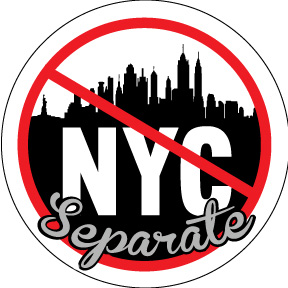by Ian Millhiser Posted on September 2, 2014
New York Governor Andrew Cuomo (D) is heavily favored to win reelection this November. Indeed, Real Clear Politics‘ polling average shows him nearly 29 points ahead of Republican Rob Astorino. Yet, due to a bizarre quirk in New York’s constitution, Cuomo could win a landslide popular vote victory over Astorino this fall — and yet still wind up having to give up the governor’s mansion to a candidate that the majority of his state’s voters did not want as their governor.
The problem arises from a provision of the state constitution which governs how the governor and lieutenant governor of the state shall be elected. Under that constitution, the occupants of both offices “shall be chosen jointly, by the casting by each voter of a single vote applicable to both offices.” Moreover, “[t]he respective persons having the highest number of votes cast jointly for them for governor and lieutenant-governor respectively shall be elected.”
New York is unusual in that it allows candidates to simultaneously run as the candidate of multiple political parties for the same office at the same time. Cuomo, for example, plans to run for reelection as a Democrat, but also as the candidate of the Working Families Party, the Independence Party, and the Women’s Equality Party. For these later three parties, Cuomo’s running mate will be former Congresswoman Kathy Hochul (D), the woman he hand-picked to be his #2 if he is reelected. In the Democratic Party’s primary, however, Hochul faces a challenge from law professor Tim Wu.
So here’s the nightmare scenario for Cuomo: if Wu wins the Democratic primary, then Cuomo/Wu will be the Democratic ticket while Cuomo/Hochul will remain the ticket for the three minor parties that also back Cuomo. Yet, because the winners of the gubernatorial and lieutenant gubernatorial races must be “chosen jointly,” and because the winner of both races is the two candidates who have “the highest number of votes cast jointly,” Cuomo could conceivably win a solid majority and still lose his reelection bid.
Suppose, for example, that the Democratic Party’s Cuomo/Wu ticket receives 30 percent of the vote, the three minor parties backing the Cuomo/Hochul ticket receive a total of 30 percent of the vote, and the Republican candidate Rob Astorino receives a total of 40 percent of the vote. In this scenario, 60 percent of New York voters would have cast their ballot for Cuomo, but the two candidates who had “the highest number of votes cast jointly,” would be Astorino and his running mate. Cuomo/Wu and Cuomo/Hochul would each count as entirely different tickets, even though both featured the same person at the top of the ticket.
These kinds of scenarios, where a candidate that a majority of the electorate opposes winds up winning election, are inevitable in what is known as a “first-past-the-post” voting system — a system where the candidate who wins a plurality of the votes is declared the winner even if they do not achieve a majority. Think of what happened in 2000, when Vice President Al Gore split the left-of-center vote with Ralph Nader, allowing conservative candidate George W. Bush to win the election (albeit with big assist from the Supreme Court). Similarly, Maine’s Republican Gov. Paul LePage owes his current job to the fact that Democratic voters in 2010 split their vote between the Democratic nominee and another candidate who was a former Carter Administration official. LaPage only received 38 percent of the statewide vote, but that was enough to win thanks to Maine’s first-past-the-post system.
Nevertheless, the situation in New York is unusual in that it would actually allow a candidate who won the popular vote in a landslide to be declared the loser of an election.
As the New York Post explains, there may be a way out for Cuomo. If Wu wins the Democratic primary, Cuomo may be able to swap out Hochul on his other ballot lines if she is nominated instead for a judgeship. Yet, even if this tactic works, it presents its own problems. The candidates for judgeships in New York should be selected because they will make good judges, not because a black robe may be the only way to avoid an absurd election rule that could place the state in the hands of a governor most New Yorkers don’t want.
